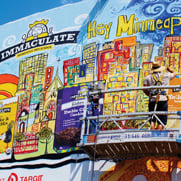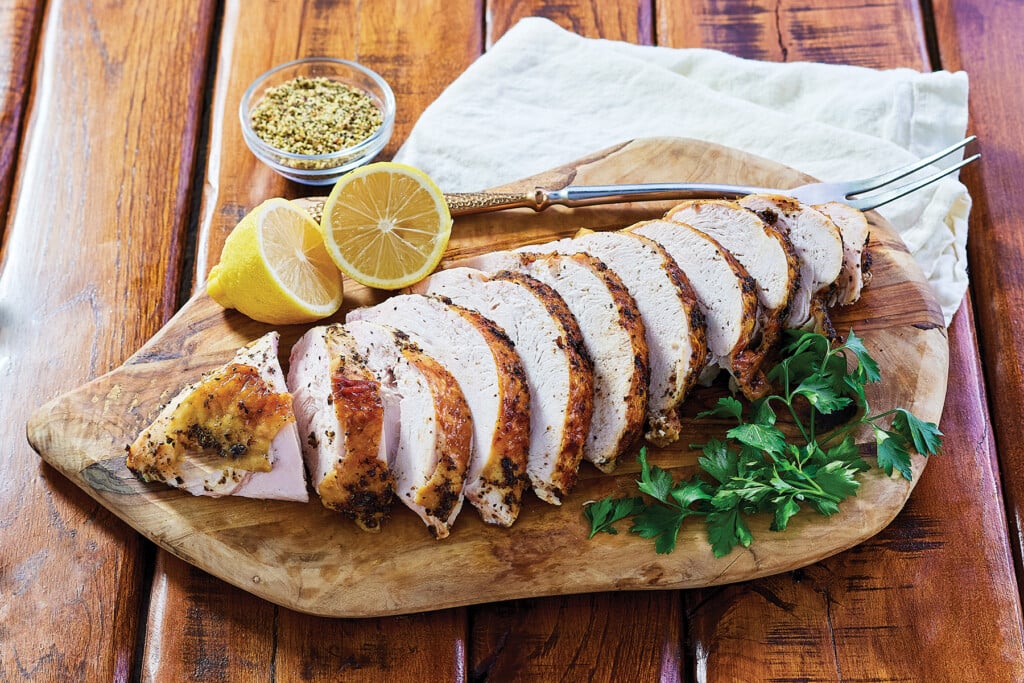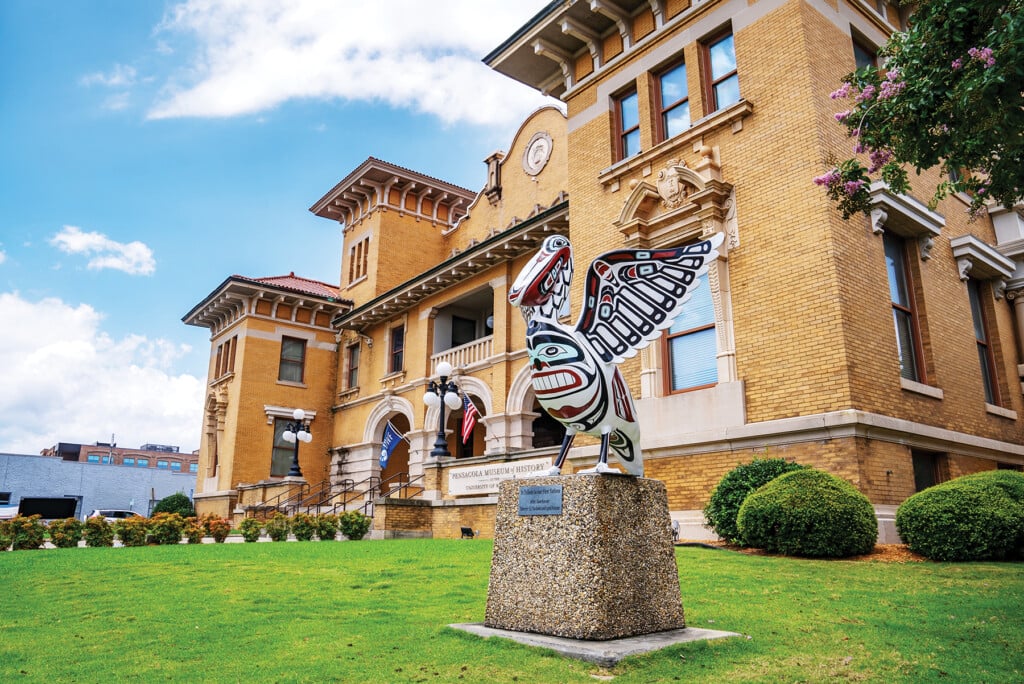How to Be a Professional Artist in 12 Steps


Courtesy of Immaculate Baking Company
In August, Immaculate Baking Company commissioned local artist Andy Saczynski to hand paint a 40-foot long billboard in downtown Minneapolis.
When I was pregnant with our fifth child, Andy told me that he wanted to be a full-time artist. I objected, saying there’s a good reason the term “starving artist” exists. I couldn’t fathom how he was going to support our family of seven as a full-time artist, but he was determined. Slowly but surely, his dream also became my dream, and I have done my best to help him along the way. Within two-and-a-half years of declaring his career intentions, Andy’s part-time hobby became a full-time profession. And guess what? We aren’t starving! I’m not necessarily an expert, but if you want to know how to be a professional artist, I’m happy to share what’s worked for us.
1. Follow Your Heart
Make what you like. Don’t just make what you think people will buy. Stick with your vision and your creativity. When your heart is in your work, it will always turn out better.
2. Look for Good Deals on Materials
Try to keep your expenses low. You can find “oops” paint at Home Depot and Lowe’s for a fraction of what paint usually costs. Also, every time we make a purchase at Michaels, a 40 percent off coupon is printed with our receipt. Use those coupons to buy canvas or expensive paintbrushes.
3. Document Your Work
I take a digital photo of every piece of art Andy creates. The file names include the name of the art and the dimensions. There are many ways to document your work, but this has worked best for us.
4. Price Your Art
Visit multiple galleries or search for original artwork online. How do you feel your art compares to the competition? Also, take into consideration how long the piece took to make and how much you spent on materials, then do the math.
5. Get Online
Do not depend only on social media. You want customers all over the world to find you. You need an Internet presence. Get a Web site. Buying a domain name is cheap, and WordPress makes building a site fairly easy. Don’t depend on social media, but don’t ignore it either. Social media is a great way for people to discover you, share your stuff and communicate with you. Pick a few platforms, and start building your presence. So far, our experience has been best with Facebook and Instagram, because they’re the most photo-heavy. Play around and see what you like.
6. Keep Track of Sales
You can get fancy with QuickBooks or stay simple with Excel, but do something! You need to find a way to keep your income and expenses organized. I’d suggest calling an accountant to find out what all you can write off for tax purposes. Save your receipts!
7. Don’t Forget to Collect Sales Tax
Collect sales tax, and report it at the end of each month. Be smart and make sure you know what the tax rate is where the transaction occurs, collect that money and thengive it to the government in a timely manner.
8. Accept Credit Cards
Do you want to sell art for a lot of money? Well, guess what? Most people don’t carry two grand in their wallet, nor do they carry a checkbook. Make sure you have the ability to accept payment with plastic. A good place to get started is Square.
9. Donate and Participate
If you want to get your name and your work out there, there are two great ways. First, donate your art to charities. Consider who your target market is, then think about which charities those people might support. Donate a piece of art to those charities’ silent auctions. Second, participate in art festivals. Not only will you get good exposure, you will get to meet a lot of new people who may become good customers. Plus, you’ll probably sell a lot of art! A warning, though: People like to haggle at festivals. Put a little wiggle room in your prices and prepare yourself mentally that some people are downright rude. Try to not take it personally, and stand firm on your pricing when you don’t feel like negotiating. Remember, this is your career, not a yard sale.
10. Get Your Work in Galleries
Visit galleries. Meet the gallery owners. Pursue gallery representation. Most galleries take a big percentage (like 50 percent), so you’ll need to adjust your pricing accordingly. When you’re selling enough to pay your bills and then some, consider opening your own gallery. This is risky, but the payoff is huge. Were we scared to open a gallery? Of course. Do we regret opening a gallery? No way. But we learned how to swim before we surfed. Which leads me to #11 …
11. Don’t Quit Your Day Job Before You’re Ready
When Andy decided to be a full-time working artist, he didn’t do it overnight. He kept his day job and made art at night and on the weekends. He participated in some festivals. He donated art to charities. He got in a gallery. As art sales went up, his “day job” hours went down. It went from 10/90, to 50/50, to 90/10, and so on. This process took two-and-a-half years until his old job was completely phased out in March 2013. Now he’s living his dream of being a professional artist, but it didn’t happen overnight. Dreams take a lot of time and a lot of work.
12. Keep Making New Art
Andy is always growing as an artist. When we compare his current work to stuff that he did a year or two ago, he’s noticeably improved (and sales have also improved). I know that will continue to happen as time goes on. As with anything in life, if you keep working on it and keep moving forward, you are bound to improve. While you’re working and improving, you will face rejection and disappointment, but don’t give up. If the transition from hobby to career takes awhile, don’t be discouraged. Let it motivate you to continually improve. If your dream is to be a professional artist, you CAN do it.
This article was first published as a blog post on artbyandyski.com on Nov. 9, 2013.


